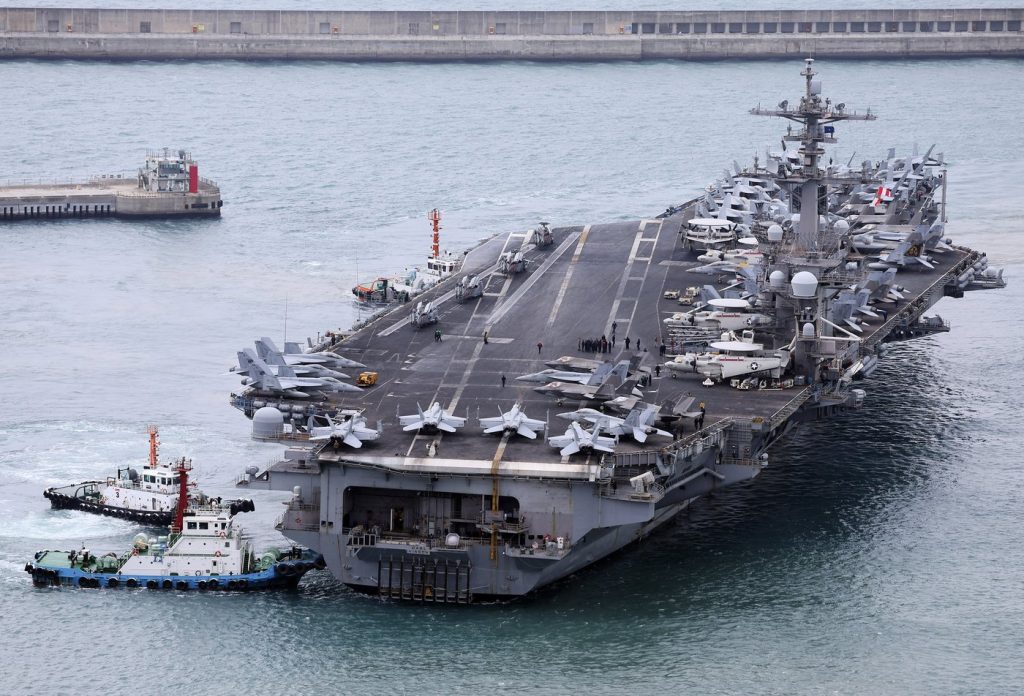SEOUL, South Korea (AP) — On Sunday, the USS Carl Vinson, a U.S. aircraft carrier, arrived at the South Korean port of Busan. This deployment serves as a show of military strength and comes just days after North Korea conducted test launches of cruise missiles aimed at demonstrating its counterattack capabilities. The U.S. presence is intended to emphasize the robust military alliance between the United States and South Korea amid ongoing threats from the North.
The arrival of the USS Carl Vinson marks the first time since June that a U.S. aircraft carrier has docked in South Korea. According to the South Korean navy, this deployment is crucial for showcasing the solidarity of the U.S.-South Korean military alliance and supporting the interoperability of combined military assets between the two nations. This move indicates a proactive stance amid escalating tensions in the region.
North Korea is expected to view the deployment of such a powerful U.S. military asset as a significant security threat. The North has historically responded to previous instances of U.S. military presence, including aircraft carriers and long-range bombers, with missile tests of its own. In light of these developments, the relationship between the U.S. and North Korea continues to be strained.
Since his inauguration on January 20, President Donald Trump has expressed intentions to reconnect with North Korean leader Kim Jong Un in a bid to revive diplomatic talks. However, North Korea has yet to respond directly to these overtures from Trump, accusing the United States of escalating hostilities since his inauguration. This complexity adds a layer of uncertainty to future diplomatic interactions.
On Friday, North Korea announced that it successfully test-fired strategic cruise missiles earlier in the week. This demonstration was aimed at signaling its adversaries regarding its military capabilities and the state of its nuclear operations. Following these tests, Kim Jong Un directed his military to remain fully prepared to utilize its nuclear arsenal, emphasizing the seriousness with which North Korea approaches any perceived threats.
Experts suggest that Kim Jong Un is unlikely to accept Trump’s diplomatic overtures in the near future, as he appears to be focusing on supporting Russia in its ongoing war against Ukraine, including the provision of weapons and troops. Analysts contend that Kim may reconsider engaging in diplomacy with the United States when he perceives a decline in his country’s current strengthening ties with Russia.
During Trump’s first term, Kim and Trump met three times in 2018 and 2019 to discuss the future of North Korea’s nuclear program. However, those high-stakes diplomatic efforts eventually fell apart, primarily due to disagreements over U.S.-imposed economic sanctions on North Korea. This history adds context to the current tensions and the challenges of resuming meaningful negotiations.
The situation remains dynamic, and the implications of military deployments and missile tests underscore the fragile nature of peace and diplomacy in the region. As the U.S. and North Korea navigate a complex geopolitical landscape, the actions of both countries will continue to be closely monitored by international observers.










